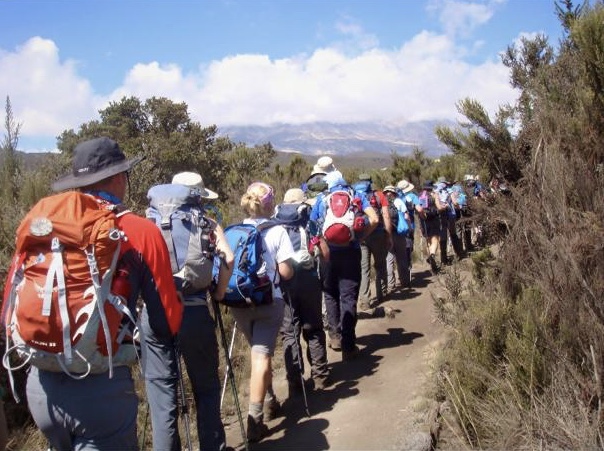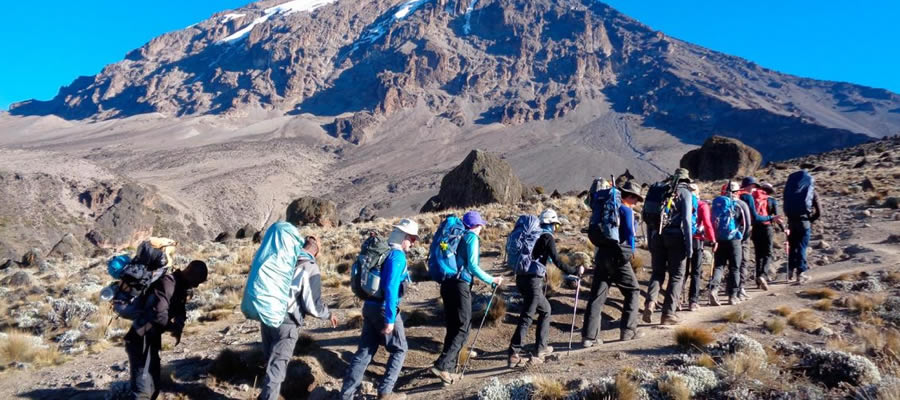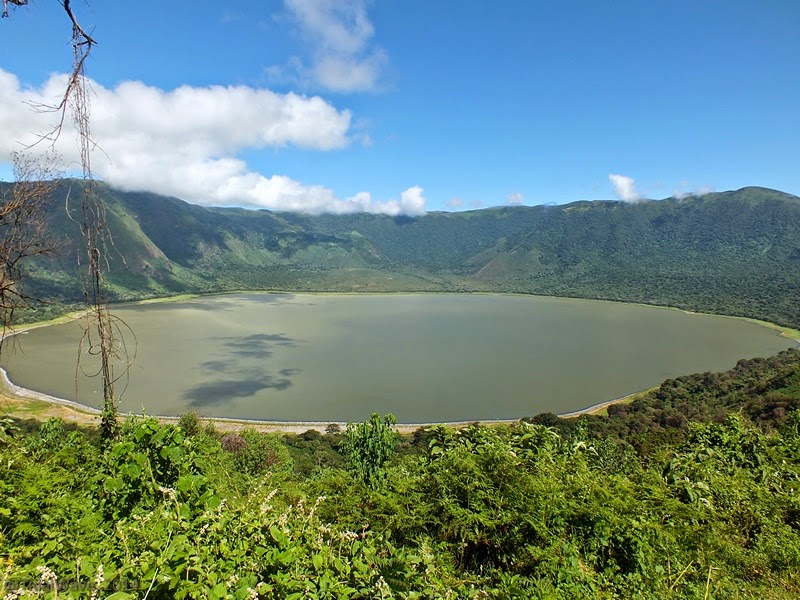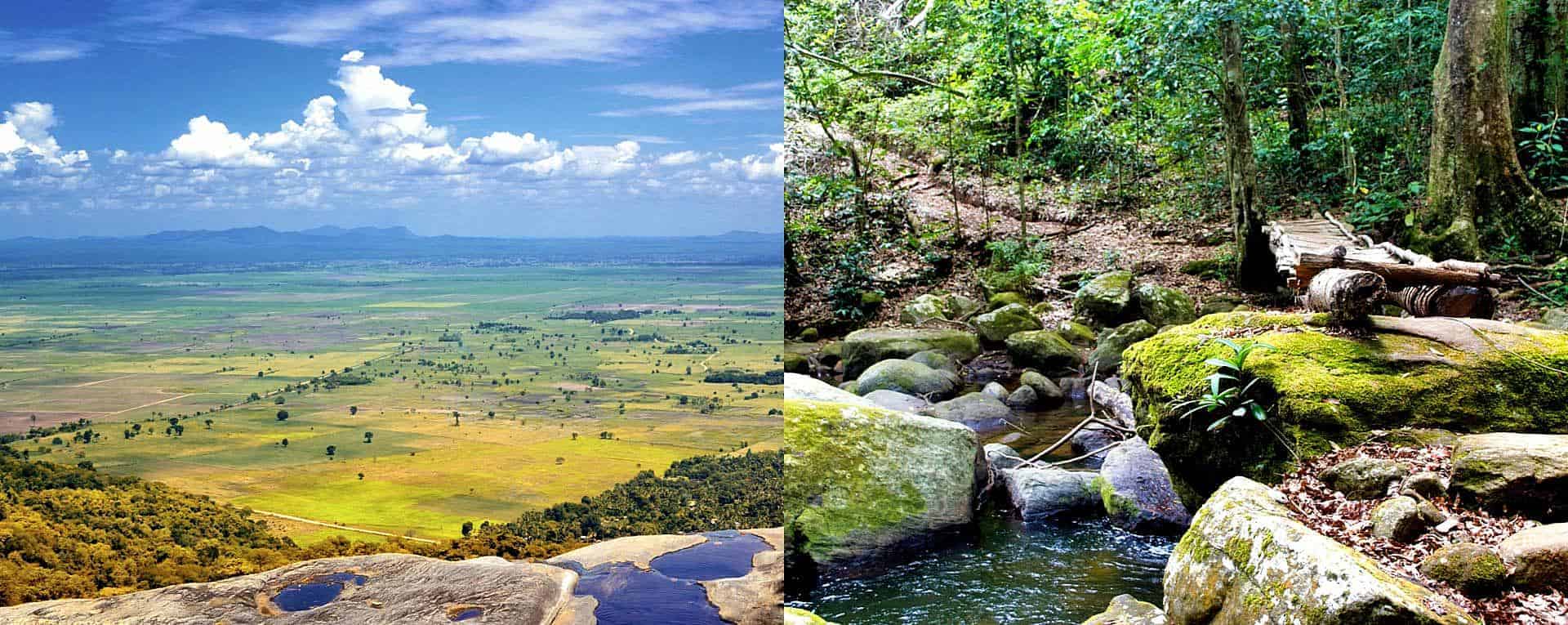Hiking / Trekking Safari in Tanzania : Tanzania is primarily known for Mount Kilimanjaro, Africa’s highest peak, and famed wildlife safari destinations like the Ngorongoro crater and the Serengeti. On your Tanzania safari tours, there are also many additional options for hiking, trekking, and adventures, as well as connecting with the local residents. Mountain Kilimanjaro is the world’s largest free-standing mountain, but Tanzania also includes additional hiking and trekking safari destinations, including Mount Meru, the Udzungwa Mountains, the Mahale Mountains, and the Ngorongoro Conservation Area. Here is a list of places where you can go hiking or trekking during your Tanzania safari tour.

Mount Kilimanjaro
Mount Kilimanjaro is a beautiful natural phenomenon and an unrivaled natural beauty located in Tanzania near Moshi town, south of the Kenyan border. Kilimanjaro Mountain is Africa’s highest peak and the world’s highest free-standing mountain. The mountain has three cones, the highest of which is Kibo, which is dormant but could erupt again. Mawenzi and Shira are no longer alive, Hiking / Trekking Safari in Tanzania.

Mount Kilimanjaro is famous for its incredible mountain climbing/hiking opportunities. Many people flock to Tanzania to walk to the peak of the world’s tallest free-standing mountain. The dry season, which runs from December to March and June through September and October, is the best time to go for the hiking safari at Mount Kilimanjaro.
Mount Kilimanjaro is one of the world’s most coveted summits. It is not a technical climb, but it is a difficult hike that should not be overlooked. Trekking to the top of Kilimanjaro takes 6–9 days, and it’s critical to plan ahead and understand the constraints and risks of doing the hike on a shoestring budget. It is one of the best place in Tanzania to go for hiking/trekking safari.
Mount Meru
Mount Meru, Kilimanjaro’s younger brother, may not have the same bragging rights, but it’s still a terrific hike. It’s a little more challenging than Kilimanjaro, but it’s still doable for individuals with no prior climbing experience.
Because it is smaller than Kilimanjaro, altitude sickness is less of a worry, and climbing it is also less expensive. Many experienced climbers pick Mount Meru as a warm-up for Kilimanjaro, although it may also be done as a stand-alone excursion. It is another best place to go for your hiking safari tour in your Tanzania execution. The hiking to mount meru take 3 to four days to ascend and descend. It is located inside the Arusha national park making it best combined with the wildlife safari in a game drive, walking safari, and canoe safari in the Arusha park, Hiking / Trekking Safari in Tanzania.
Ngorongoro Conservation Area
The stunning Ngorongoro Conservation Area is an excellent another hiking spot in Tanzania. Its main lure is its wildlife and safari experiences, but if you stay longer, you’ll discover some of the most beautiful hiking routes you’ll ever see, which combine wildlife watching with cultural experiences and magnificent scenery. The Olmoti Crater and the Empakai Crater are two of the nicest trails for hiking, both lasting around an hour. The Maasai Mountain of God, Ol Doinyo Lengai Volcano, is a more difficult 1-day walk that offers spectacular views of Lake Natron in the distance.

Usambara Mountains
The mountain range lies midway between Kilimanjaro’s starting point, Moshi, and the seashore. Beautiful views of mountain ranges and a variety of walks of varying difficulties have earned it the nickname “Switzerland of Tanzania.“ Treks are typically 2-3 days long, but longer treks are available. The Usambara Mountains are well-known for offering affordable trekking and cultural tourism. It is another hiking safari place to in your Tanzania safari tour.
Mahale Mountains
The Mahale Mountains in western Tanzania are still relatively unknown, although they are home to amazing animals, natural wonders and hiking safari experience. Chimpanzee trekking is one of the mountains’ most popular attractions. The Mahale Mountains’ forested slopes are home to not only the lively chimpanzee, but also many other creatures.in your Tanzania safari tour holiday you will Enjoy a guided woodland walk/hike that will reveal the region’s amazing fauna and flora, including other primates, bush pigs, a rainbow of butterflies, bushbuck, and a variety of bird species.
Udzungwa Mountains
The Udzungwa Mountains in the south, near Mikumi National Park, are possibly Tanzania’s most unexplored trekking destination. The environment is lush and lovely, with spectacular waterfalls and ten different primates. It’s an intermediate-level mountain range, but keep in mind that you’ll be trekking in a rural part of the nation with limited infrastructure, Hiking / Trekking Safari in Tanzania.
Udzungwa Mountains National Park in southern Tanzania is known as the “Galapagos of Africa” because of its great diversity of tropical flora and protected wildlife, which includes leopards, lions, elephants, African wild dogs, and primates, notably the unique Iringa red colobus monkey.
It’s a popular hiking location, with paths across the large national park. Short, scenic hikes to strenuous climbs up Mwanihana Peak; a 23-mile (37-kilometer) one- or two-night journey; or the even longer Lumemo Trail, which takes about five days. The two-to three-hour journey to Sanje Waterfall, with its breathtaking 600-foot (183-meter) cascade, is the most popular. Hikers will not only be rewarded with the falls and a refreshing swim in the pools at the conclusion of the trail, but they will also have the opportunity to witness endemic Sanje Crested Mangabey monkeys, squirrels, and red duiker along the way.

WHEN TO GO HIKING/TREKKING IN TANZANIA
In Tanzania, you may always find some trekking options, but not all paths are accessible during the rainy seasons, which run from November to mid-December and from the end of March to May. Some trails become impassable during the rainy season, making Climbing Kilimanjaro and Meru perilous. The dry season, which runs from June to October, is often cooler and better conducive to hiking, though night temperatures may get extremely low, especially in the mountains, so bring appropriate clothing regardless of when you visit.


